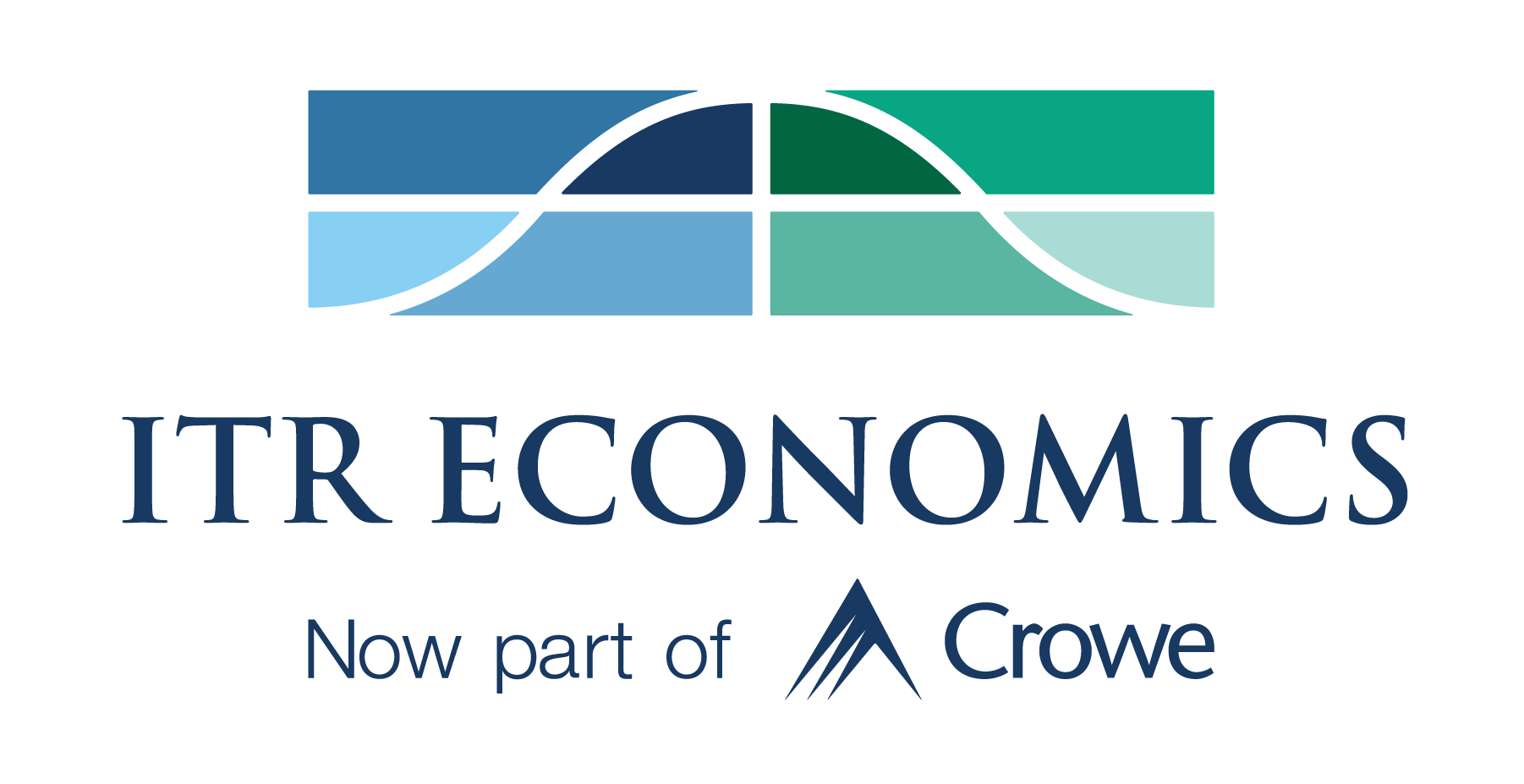- Mon - Fri: 8:30 - 5:00
- +1-603-796-2500
- ITR@itreconomics.com
October 6, 2023
- Home
- portfolio
- TrendsTalk
- October 6, 2023
We have the inverted Treasury yield curve and higher interest rates – what else is driving our 2024 recession forecast for the US? Learn about four other key factors that relate to the upcoming economic downturn in the latest episode of TrendsTalk!
with Taylor St. Germain
DRIVERS BEHIND THE 2024 RECESSION
The below transcript is a literal translation of the podcast audio that has been machine generated by Rev.
Hi everyone. My name’s Taylor St. Germain, and welcome to this edition of Trends Talk. We’ve talked a number of times in the past about this mild recession that ITR Economics is forecasting in 2024. A lot of the time we’ve spent talking about an inverted yield curve and higher interest rates, which are noteworthy reasons for this upcoming recession, but it’s not just that. And that’s what I really wanted to focus on today with some of the other drivers or leading indicators that are showing us weakness in the economy as it relates to this mild recession expectation next year. I wanted to talk about four key areas, personal savings, exports, corporate bond yields, and then finally taking more of a look at corporate profits, which again, I know we’ve talked about in the past. But what’s interesting about corporate profits is what’s developed in the rate of change as of late.
So let’s go in order in terms of talking about some of these trends. Here at ITR, we look at the relationship between the US total retail sales, 12 month moving total, and the personal savings balance, three month moving average. And what we notice, of course, is that the consumer is resilient and the consumer is not in a dire situation by any means, but it’s clear that there’s pressure on the consumer. And by looking at that relationship between retail sales and personal savings, you can see some of that pressure. And what I mean by that is personal savings swelled during the pandemic when we were all at home, we were saving more money. Stimulus checks certainly had an impact on that. But what we’ve seen as of late is decline in the personal savings balance.
Now again, are we seeing savings accounts below 2019 levels? No, they’re still above 2019 levels. Which shows that yes, the consumer’s resilient, we’re not in a dire situation. But it is still clear that we’re under pressure having less money in our savings account. So it’s something that we’re watching closely, the consumer, 66% of GDP. So I’d say it’s a pretty important part of the US economy, and it’s feeling some pressure, but again, not in a dire situation.
When we look at some other relationships outside of the consumer, I always like to look at CapEx. US nondefense capital goods new orders correlates very well with the US economy in terms of US industrial production. And we like to look at exports as it relates to CapEx expectations because you get a lead time by looking at exports. Exports leads capital expenditures by four months, and based on that lead time, the exports rate of change is at minus 8.2% right now on a 3/12 rate of change. And that suggests we see further downside for the US economy and further downside in terms of CapEx. So another supporting factor as it relates to a recession next year.
A longer term indicator, again, exports I just mentioned, were only four months. If you look at corporate bond yields as it relates to the US manufacturing economy, we actually get a 22-month lead time. And that’s another noteworthy signal of a manufacturing recession in 2024 is the recent rise that we’ve seen in US corporate bond yields. It has actually an inverse relationship to the manufacturing economies. That’s why rise in corporate bond yields are typically bad news as it relates to the manufacturing economy.
So we’ve got weakening personal savings as it relates to the consumer. We’ve got declining exports. We have corporate bonds, particularly rise in corporate bonds being concerning for next year. And then finally, just wanted to finish off with some comments around corporate profits.
Corporate profits have a nine-month lead time to that same CapEx indicator I was comparing exports to, which is US nondefense capital goods new orders. Corporate profits recently the 3/12 rate of change went from positive to negative. That’s a negative checking point for all of us here at ITR Economics. That 3/12 rate of change for corporate profits is at minus 4.5%. And again, seeing that rate of change point below the zero line suggests we continue to see downside pressure and highlights a likely recession in the US economy next year.
So to sum all this up, it’s not just an inverted yield curve, it’s not just the higher interest rates. We see warning signs out there in the economy. Now we still expect the recessions mild due to that consumer resilience, even though they’re under pressure and for a number of other reasons that you can find in our ITR Trends Report. But there’s things to keep your eye on. We don’t hang our hat on just one economic indicator. It comes down to a multitude of economic evidence. And I think you can see based on this information today, that we have a significant amount of evidence that’s pointing to a mild recession next year.
So I hope you found this information helpful. My name’s Taylor St. Germain, an economist with ITR Economics. Thanks for joining me on this episode of Trends Talk, and I’ll see you on the next one.




